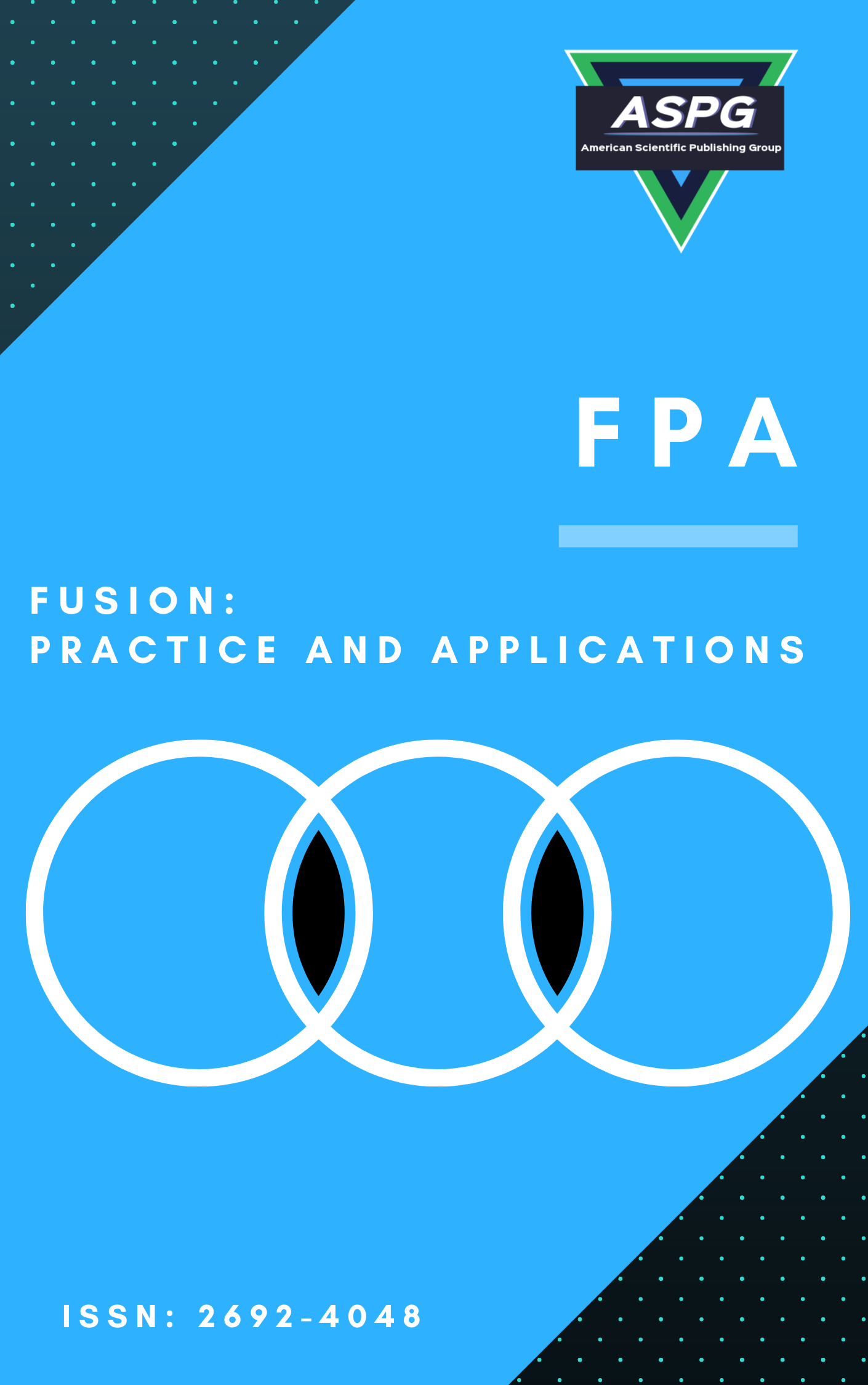

Volume 18 , Issue 2 , PP: 146-156, 2025 | Cite this article as | XML | Html | PDF | Full Length Article
Mohammed Yousif 1 , Noor M Jassam 2 , Ahmad Salim 3 , Hussein Ali Bardan 4 , Ahmed Farhan Mutlak 5 , Anas D. Sallibi 6 , Abdalrahman Fatikhan Ataalla 7
Doi: https://doi.org/10.54216/FPA.180211
Melanoma is one of the most aggressive types of skin cancer, and its early detection is critical to improving survival rates and treatment outcomes for patients. Conventional diagnostic methods often suffer from high computational costs and low accuracy, primarily due to inadequate feature selection and classification strategies. The goal of this research is to combine state-of-the-art deep learning techniques with optimization algorithms to develop a precise and efficient predictive system for melanoma detection. In this work, we propose a novel framework that integrates Convolutional Neural Networks (CNNs) for image classification and a binary Grey Wolf Optimization (GWO) algorithm for feature selection. The binary GWO algorithm identifies the most relevant features from dermatological images, eliminating redundancy and reducing the computational burden. The CNN is then trained on the refined feature subset to enhance classification efficiency. Extensive experiments on publicly available skin lesion datasets demonstrate that the proposed model significantly outperforms traditional machine learning models. Improvements in sensitivity, specificity, and overall classification accuracy highlight the effectiveness of combining deep learning with optimization techniques. Our results show that deep learning and optimization methods, such as the binary GWO algorithm, can be successfully applied to melanoma diagnosis. This strategy not only improves detection efficiency and accuracy but also supports early diagnosis and treatment planning, leading to better patient outcomes. By leveraging the binary GWO algorithm to optimize the feature selection process and CNNs for image classification, the proposed approach reduces computational costs while increasing classification accuracy. When trained and evaluated on publicly available skin lesion datasets, the model demonstrates significant improvements in sensitivity, specificity, and overall accuracy compared to conventional machine learning models.
Convolutional Neural Network , Gray Wolf Optimization , Skin cancer , Deep learning , Optimization
[1] N. Saleh, M. A. Hassan, and A. M. Salaheldin, "Skin cancer classification based on an optimized convolutional neural network and multicriteria decision‑making Criterion Importance via Intercriteria Correlation Preference Ranking Organization Method for Enrichment Evaluation," Sci. Rep., pp. 1–19, 2024, doi: 10.1038/s41598-024-67424-9.
[2] V. Rajinikanth, S. Kadry, R. Damaševičius, D. Sankaran, M. A. Mohammed, and S. Chander, "Skin melanoma segmentation using VGG-UNet with Adam/SGD optimizer: A study," in Proc. 2022 3rd Int. Conf. Intell. Comput. Instrum. Control Technol. (ICICICT), Aug. 2022, pp. 982–986, doi: 10.1109/ICICICT55662.2022.9954715.
[3] N. Seyala and S. N. Abdullah, "Cluster analysis on longitudinal data of patients with kidney dialysis using a smoothing cubic B-spline model," Int. J. Math. Stat. Comput. Sci., vol. 2, pp. 85–95, 2023, doi: 10.59543/ijmscs.v2i.8337.
[4] D. P. Boso, D. Di Mascolo, R. Santagiuliana, P. Decuzzi, and B. A. Schrefler, "Drug delivery: Experiments, mathematical modelling and machine learning," Comput. Biol. Med., vol. 123, p. 103820, 2020, doi: 10.1016/j.compbiomed.2020.103820.
[5] H.-Y. Guo et al., "Thrombotic microangiopathy led to acute kidney injury in an infant with hemophagocytic lymphohistiocytosis: A case report," Exp. Ther. Med., vol. 21, no. 4, p. 396, Apr. 2021, doi: 10.3892/etm.2021.9827.
[6] K. T. Hallam, M. Wishart, and O. Davidson, "Cause for concern: Australian youth engaged with alcohol and other drug services are falling behind our community progress in reducing tobacco use," Early Interv. Psychiatry, vol. 15, no. 6, pp. 1789–1792, Dec. 2021, doi: 10.1111/eip.13106.
[7] U. K. Lilhore et al., "A precise model for skin cancer diagnosis using hybrid U-Net and improved MobileNet-V3 with hyperparameters optimization," Sci. Rep., vol. 14, no. 1, p. 4299, 2024, doi: 10.1038/s41598-024-54212-8.
[8] M. Yousif, B. Al-Khateeb, and B. Garcia-Zapirain, "A new quantum circuits of quantum convolutional neural network for X-ray images classification," IEEE Access, vol. 12, no. March 2024, doi: 10.1109/ACCESS.2024.3283492.
[9] R. Sabir and T. Mehmood, "Classification of melanoma skin cancer based on image dataset using different neural networks," Sci. Rep., vol. 14, no. 1, p. 29704, 2024, doi: 10.1038/s41598-024-75143-4.
[10] M. A. Mohammed, B. Al-Khateeb, M. Yousif, S. A. Mostafa, S. Kadry, and K. H. Abdulkareem, "Novel crow swarm optimization algorithm and selection approach for optimal deep learning COVID-19 diagnostic model," 2022.
[11] M. Mateen, S. Hayat, F. Arshad, Y.-H. Gu, and M. A. Al-Antari, "Hybrid deep learning framework for melanoma diagnosis using dermoscopic medical images," Diagnostics, vol. 14, no. 19, 2024, doi: 10.3390/diagnostics14192242.
[12] Mohamed, W. Mohamed, and A. H. Zekry, "Deep learning can improve early skin cancer detection," Int. J. Electron. Telecommun., vol. 65, no. 3, pp. 507–513, 2019, doi: 10.24425/ijet.2019.129806.
[13] M. Manzo and S. Pellino, "Bucket of deep transfer learning features and classification models for melanoma detection," J. Imaging, vol. 6, no. 12, 2020, doi: 10.3390/jimaging6120129.
[14] M. Azeem, K. Kiani, T. Mansouri, and N. Topping, "SkinLesNet: Classification of skin lesions and detection of melanoma cancer using a novel multi-layer deep convolutional neural network," Cancers (Basel), vol. 16, no. 1, Dec. 2023, doi: 10.3390/cancers16010108.
[15] S. I. Abir and S. Shoha, "Deep learning-based classification of skin lesions: Enhancing melanoma detection through automated preprocessing and data augmentation," 2024, doi: 10.32996/jcsts.
[16] J. J. Da Costa Nascimento et al., "Health of Things Melanoma Detection System—detection and segmentation of melanoma in dermoscopic images applied to edge computing using deep learning and fine-tuning models," Front. Commun. Networks, vol. 5, no. June, pp. 1–21, 2024, doi: 10.3389/frcmn.2024.1376191.
[17] Salim, W. K. Jummar, F. M. Jasim, and M. Yousif, "Eurasian oystercatcher optimiser: New meta-heuristic algorithm," J. Intell. Syst., vol. 31, no. 1, pp. 332–344, 2022, doi: 10.1515/jisys-2022-0017.
[18] X. Yan, Z. Lin, Z. Lin, and B. Vucetic, "A novel exploitative and explorative GWO-SVM algorithm for smart emotion recognition," IEEE Internet Things J., vol. 10, no. 11, pp. 9999–10011, 2023, doi: 10.1109/JIOT.2023.3235356.